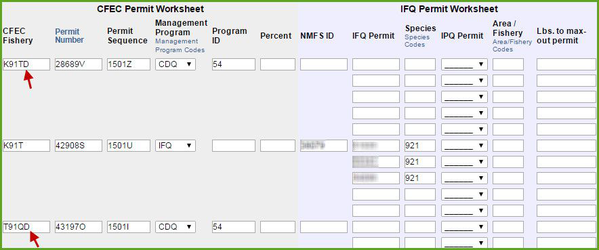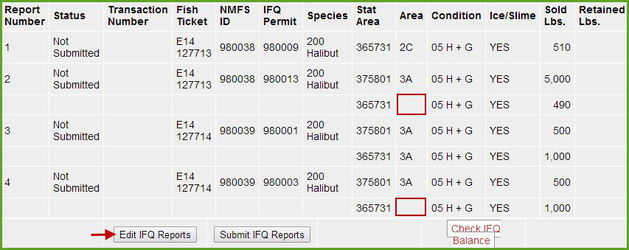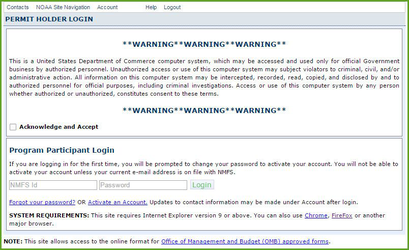eLandings User Manual
eLandings Reporting System FAQ's
faqs
Related
How to search for, modify or edit and reprint a landing report/fish ticket
/wiki/spaces/pm/pages/424148994
Where can I find the user's manual for the Interagency Electronic Reporting System (eLandings)?
- Documentation can be found here: https://elandings.atlassian.net/wiki/display/doc/eLandings+User+Documentation
Who is required to use eLandings for reporting fishery harvest in Alaska?
- Shoreside processing plants that receive federally managed groundfish must maintain a current Federal Processor Permit (FPP) and use the eLandings system.
- At-sea catcher processors fishing in federal waters (3-200 miles) must obtain a Federal Fishery Permit (FFP) and use eLandings/seaLandings to submit their production, landing, and logbook reports.
How do I register for an account to use the eLandings system?
- After you have your required State and Federal permits, go to the Internet site https://elandings.alaska.gov/web
- Under How to Get Started click on Register and follow the instructions.
- To expedite registration, you should know the type of operation you’re running and have the following permits on hand:
- ADF&G Processor License Code
- Federal Permit Number
- Registered Crab Receiver Number
- Registered Buyer Number
NMFS can also assist you with this process during regular business hours by emailing eLandings User Support at eLandings@alaska.gov
Can I set up one account in the eLandings registration system, to be used by all my company's staff?
- No. Individual users must have their own accounts. An Administrative User for your operation can add additional users with distinct ID’s. For documentation on adding users to your operation, follow this link: https://elandings.atlassian.net/wiki/display/doc/Operations+Administration
I have new staff that need to learn how to use the reporting system, is there a way for me to show them how to making landing reports in the eLandings system?
- eLandings has a training instance website http://elandingst.alaska.gov/web so new users can familiarize themselves with the reporting system. You can do everything on the training system that you can do on the real system, except that reports are not officially submitted.
- Training scenarios are available here: https://elandings.atlassian.net/wiki/display/doc/eLandings+Training+scenarios
- You can contact eLandings staff and request a web-based training demonstration at eLandings@alaska.gov
How do I report landings when my Internet service is not operating?
- Go to: Procedures for Outages
- Follow the instructions based on the type of report you are trying to make; IFQ, groundfish, or salmon.
When do I report and create a landing report / fish ticket?
- If you are CDQ fishing, then you need to submit a weekly fish ticket (Sunday to Saturday).
- For all other management programs you would submit a fish ticket at the end of your trip when you offload.
How long do I need to keep old fishing logs, landing reports, or fish tickets?
- Three years after the end of the fishing year during which the records were made.
Do I report a salmon head or crab leg as a whole fish?
- Yes, the species would need to be reported as a whole fish or crab.
Do I report donated catch on my Shoreside Production Report?
- No, donated catch is not entering commerce so it should not be included on the Production Report.
How do I report a haul that crosses two Federal Reporting Areas on my Daily Production Report?
- You enter the federal area where the haul retrieval took place..
What information do I need to have on hand, from the vessel operator, to begin the eLandings reporting process?
Groundfish landings:
- Vessel ADF&G number
- Number of crew and observers on board.
- Dates when fishing began and ended
- CFEC permit(s) appropriate to the fishery - the plastic card(s) provided to individuals by CFEC
- Statistical areas fished
Crab IFQ landings:
- NMFS ID, IFQ permit(s), and if Class A IFQ permit holder, IPQ permit number(s)
Halibut/Sablefish IFQ landings:
- NMFS ID, IFQ permit(s)
- Gear used to fish. If pot gear, number of pots set, number of pots lost and number of pots left on the grounds.
What is the difference between an initial report and a final report in eLandings?
- Initial submitted reports contain basic details about the landing such as vessel, permit, location information as well as itemized catch. But they are not “final” reports until the user clicks on the Final Submit button. These reports should display on the Reports Menu each time you login to eLandings.
- The state of Alaska requires that all landing reports (which generate a fish ticket for each CFEC permit entered) must be finalized within 7 days of initial report submission.
- Final Submitted reports are considered complete by State and Federal standards as they do not need any more information added to them.
If the initial report will not change, can I submit this report as the final report?
- Yes you can.
- Keep in mind that all reports can be edited within 90 days of the landing date. If the landing report date has gone past 90 days, you will need to contact elandings staff at eLandings@alaska.gov to have the report unlocked.
- The only exception to this is with the IFQ portion of the landing report. Once you have submitted the IFQ report, you must contact NOAA Enforcement Data Technicians (800-304-4846 option 1)and complete a Manual IFQ Landing Report.
- After Initial Report submission but prior to submitting the IFQ report, you can edit the IFQ portion.
How do I locate a finalized landing report?
- Finalized landing reports are easily located within the Search for Reports section of the Reports Menu web page.
- If you know the Report ID or fish ticket number, that is all that is needed to search for a specific report.
- You can search for and display all final landing reports using the Status field
- You can also search for and display all reports by using the Report Type field.
- Then click on the report number in blue test to access it.
I started a landing report but did not submit it yet. How can I delete an unsubmitted landing report?
- The eLandings system allows you to easily delete an unsubmitted report.
- From the Reports Menu, select the link outlined in red like screen shot below.
- The link opens a web page that requires you to enter information about the unsubmitted report that you want to delete.
- Note that all the fields have to match exactly with the values contained in the report that you are deleting.
- For more detailed instructions on how to Delete an Unsubmitted Report, use this link: Delete Unsubmitted Reports
I messed up on my IFQ permit allocations but have already generated the IFQ report, can I still make changes?
- As long as you have not submitted your IFQ report, you can make edits or remove the entire report.
- However, we strongly advise that you delete the entire report and start fresh instead of editing the IFQ species catch.
- To remove an unsubmitted IFQ report, scroll down to the bottom of the Report Display page.
- Once you’re satisfied everything is correct, re-generate the IFQ report and submit it.
- Click on the Edit IFQ Reports button.
- Then click on the Remove Unsubmittted Reports button.
- You will need to make edits to whatever it was that was incorrect regarding the IFQ species.
I am a hired skipper/master in an IFQ fishery. I am also simultaneously fishing my own IFQ quota. I want to provide the coop manager (or other quota owner) with a receipt of their portion of the catch, but I don’t want to give them a copy of my fish ticket. Can I have a second fish ticket created for this portion of the landing?
- No, fish tickets are directly tied to individual CFEC permits not IFQ permits.
- However, the eLandings system provides users with the ability to print out individual IFQ permit reports as a PDF.
- For the Rationalized Crab fishery, the poundage of deadloss is also documented.
- The off-load of each trip shall be documented as one landing report, unless the off-load documents a partial delivery to separate processing facilities.
- The IFQ Permit Report is only available after you have submitted the IFQ Report(s).
- Each report includes poundage and value based on grading and pricing which must be entered prior to viewing the Permit report.
- Scroll down the Report Display page until you find the IFQ Report section. Note that the IFQ report numbers are in blue text which means they are links that can be clicked on.
I am having trouble distinguishing letters and numbers on the CFEC permit card. How can you differentiate the number zero (0) from the letter "O" and the number one (1) from the letter I?
- To distinguish the number zero (0) from the letter “O” and the number one(1) from the letter “I” on CFEC permit cards, these characters are embossed with the following distinctive features:
- Zero(0): Ø, stroke through the number zero
- Letter “O”: O, open capital character
- One(1): 1, one flag at the top of the number
- Letter “I”: I, horizontal bar at the top and bottom of capital character
- This CFEC permit card illustrates the use of the letter I and the numbers zero(0) and one(1).
I am getting an error that the CFEC permit or vessel ADF&G number is invalid. It is the middle of the night and I need to complete this landing report. What can I do?
- You can use Interim Values that have been created for situations where permits and other required reporting information fail validation in the system.
- Using interim values enable you to submit the landing report but the interim values must be replaced with valid permits or vessel ADF&G numbers within 72 hours.
- During the 72 hour interim time period, you will need to contact the local office of ADF&G or NMFS to obtain assistance.
|
I am getting an warning that a sablefish C06B or C61B permit should be used for directed sablefish fishery, but this landing report is for CDQ. What can I do?
- Sablefish is not considered PSC, as long as it falls under the CDQ fish ticket it is fine as bycatch.
- You can click the Save Ignore Warnings button and continue with your landing report.
Another Processor would like us to custom process the fish they are purchasing. Is it possible for us to do this in the eLandings system?
- Yes but you will need to set up a custom processing relationship between the processor and the “owner” of the fish. Additionally, you must be an administrative user so you can add child operations in eLandings.
- The “owner” of the catch must establish the business relationship with the custom processor and obtain the necessary permits to create the operation.
- It is very easy to document and establish this relationship in the eLandings System.
- The purchaser/owner of the catch must have an operation already set up for the plant or vessel that will be doing the actual processing.
- The purchaser/owner then authorizes the custom processor to act as their agent in receiving (and possibly processing) the catch.
- The custom processor will need to provide to the purchaser/owner its identifying permits that are required to take possession of the catch. These include the ADF&G Processor Code, the Federal Processor Permit number, the Registered Buyer number(RB) for IFQ halibut or sablefish, and the Registered Crab Receiver (RCR) number for IFQ crab.
- Crab custom processing operations require NEW RCR Permits that identify the processing facility and location, as well as the “owner” of the catch.
- It is not necessary for the purchaser/owner of the catch to provide the custom processor with a metal code plate to complete the landing report. Once the business relationship operation is established, the eLandings system will automatically display the owner processor and the custom processor within the landing report web window.
- For assistance with adding users or other operation types to your processing operation see the eLandings User's Manual or email eLandings User Support at eLandings@alaska.gov.
Why does eLandings show decimal’s on weights? We do everything rounded to whole pounds, why can’t eLandings do the same?
- You can customize the way reports display for your specific UserID by going to the User Profile link which is located at the top of the eLandings Reports Menu screen.
- From this screen, you can customize numerous aspects of how your reports are displayed in eLandings.
- The eLandings system has to deal with multiple levels of splitting and allocating weights among permits. An example would be with generating IFQ reports on landings with multiple statistical areas entered on the stat area worksheet, the weights, and (numbers of crab), are divided and subdivided, and are treated as fractions that can be added back together.
- Handling divisions using fractions rather than by complex rules of where to put the remainders simplifies the system and avoids problems where the special rules are not right.
- If you want to see only pounds with no fractions you can edit the itemized catch manually and avoid using the statistical area worksheet.
Why are you asking for the number of crew on-board the vessel? Does this include processing crew for a Catcher Processor operation?
- The number of crew members on-board is used for economic analysis of the fisheries. This number includes State of Alaska licensed crew only, not processing crew.
In the landings report, there is a field asking for number of Observers Onboard. Why are you asking for information about Observers on a fishing vessel that delivered to our plant?
- In 2013, the Observer program was restructured to include a Partial Coverage category which requires fishing vessels greater than 40 ft LOA to log their fishing trips in an online system called ODDS that randomly selects vessels for an Observer.
- The Observer program is trying to match up observed fishing trips to landing report IDs which will facilitate data analysis and help NMFS evaluate observer coverage in the groundfish and halibut fisheries.
What are the vessel categories and selection pool for Observer selection?
- No-selection pool: The no-selection pool is composed of vessels that will have no probability of carrying an observer on any trips for the 2017 fishing season. These vessels are divided into two categories:
- Fixed gear vessels less than 40 ft LOA and vessels fishing with jig gear, which includes handline, jig, troll, and dinglebar troll gear.
- Electronic monitoring (EM) selection pool: Fixed gear vessels that have opted-in to the EM selection pool and will participate in the EM cooperative research described in the 2017 EM pre-implementation plan.
- Trip-selection Pool: A random selection of trips, termed trip-selection, will be the sole method of assigning observers to at-sea fishing events in 2017. There are six categories in the trip-selection pool.
Additional information regarding the Deployment Plan for Observers can be found online at: https://www.fisheries.noaa.gov/tags/north-pacific-observer-program?title=annual%20deployment&field_species_vocab_target_id=&sort_by=created
How do I view Observer Fee information in eLandings?
- When you submit your groundfish landing report you can access the fee liability table by clicking the View Observer Fees PDF button in the Summary section found at the bottom of your landing report screen.
- If the observer fee liability report is not available at the time you submit your landing report, you should be able to access it 24 hours later by logging into eLandings as you normally would and using the Observer Fee search section located at the bottom of the main Reports Menu page in eLandings.
- You can search for landings that occurred within a specific date range.
- You can search for landings by a specific vessel but you must also enter a specific date range.
What specifically do you want when you ask for the "number of days fished"?
- The number of days that your gear was in the water, actively fishing. This would include soak days (times) for pots and longline gear. Days spent traveling to or from the grounds, if no gear is in the water, are not considered when calculating days fished.
I am a Hired Master for a cooperative or another IFQ permit holder for whom I'm authorized to fish. I have a NMFS ID number and the IFQ permit holder has a NMFS ID number. Which NMFS ID should be recorded for the landing report?
- Record the NMFS ID for the individual who holds the CFEC permit and will sign the fish ticket.
Do I need to print out the ADF&G fish ticket from the eLandings system? Do I need to have these forms signed by the CFEC Permit holders? Do I need to imprint the CFEC Permit Card?
- Yes to all of these questions except –
- If you have a magstripe reader, you can use it to capture the CFEC permit information instead of imprinting it on the fish ticket.
Do I continue to complete an ADF&G paper fish ticket form, in addition to the eLandings reporting system?
- No, all required reporting for both the ADF&G and NMFS RAM can be completed using the eLandings system.
- eLandings will generate a paper fish ticket that you must, print, emboss with the CFEC permit card, sign, and submit to ADF&G within 7 days of the end of the offload.
- Completed ADF&G fish tickets should be sent to your local ADF&G office
What do I do if I receive an error message in the eLandings system and cannot submit my report?
- The eLandings system provides you with error messages that point to where the problem is and provides you with instructions on fixing it.
- When you get an error message, click on the blue text of the error message to get details which will provide a description of the error, probable causes, and corrective action.
It is between midnight and 6 a.m. and I just received an IFQ Red Line error message, to contact NOAA Fisheries Enforcement. What do I do now?
- NOAA Fisheries Enforcement provides Data Technicians that can assist you 6 a.m. to midnight. Call their toll-free number (800) 304-4846, option #1, during their business hours. If no one is available to assist you at other times, you will need to wait until 6 am.
I submitted an IFQ report but afterward the fisher told me he wants to change the poundage assigned to his IFQ permits, what should I do?
- Contact the NOAA Data Technicians at 800-304-4846 option #1. They will provide you with instructions on how to file a Manual IFQ Landing Report (MLR). Once that form has been returned to the Data Techs, you will need to make corrections to the landing report.
- The landing report must be modified to reflect that an MLR was done,
- Open the landing report and click on the Edit Vessel, Permit, Location Information button. Locate and check the box in front of the text that reads IFQ Reported Manually. Then scroll to the bottom of the page and click on the Save button.
- Now review the report and edit the information on the fish ticket so that it matches with the information on the MLR that you submitted to the Data Techs. Click on the Save button and reprint your fish ticket(s) then send the edited fish ticket to your local Fish and Game office.
How can I capture the electronic version of the landing report for our own operation/bookkeeping system?
- eLandings has a Data Extract feature that will allow you to export landing, production, and logbook data as an XML, XLS, or CSV file.
- On the Reports Menu page, locate the link at the top of the page that reads Data Extract and click on it.
- There are instructions posted on the page that explain how to extract different types of data.
- If you have questions, contact eLandings@alaska.gov
What is XML? How can I obtain the schema for the XML output?
- XML is a type of text file that the eLandings system and many other systems recognize. The schema is available by email at: elandings@alaska.gov
eLangings gives me an error message telling me the delivery condition code is not correct for the species, what condition code can I use?
- You can use condition code 97 and save the product line.
- Click on the Add/Edit Comment button, to describe the condition of the fish.
IFQ Crab Landings
More information on the Rationalized Crab Program can be found here: https://alaskafisheries.noaa.gov/sustainablefisheries/crab/crfaq.htm
How do I report rationalized crab landings?
- Registered Crab Receivers are required to report all CR crab fishery landings using the eLandings program.
- For the at-sea fleet, the seaLandings software program can be used to generate crab landings that can be submitted via email or directly through the internet.
I am a Catcher Processor that will participate in the CDQ crab fishery using seaLandings as my reporting method. How often should I be reporting?
- You must report CDQ catch once per week. Fish tickets are electronically submitted through eLandings. You will still need to print out the paper fish ticket and take it to the local ADF&G office.
I am a shoreside processor that will be receiving CDQ crab. Do I use the eLandings system to report this harvest? How do I report catch in the CDQ crab fishery, using the eLandings system?
- Yes, CDQ crab other than Norton Sound king crab, is rationalized crab, and must be reported by Registered Crab Receivers, using the eLandings system.
- For reporting CDQ crab, you will need to enter the CFEC CDQ permit, identify the management program, and the specific identification number issued to the CDQ group.
- You should not enter any information in the IFQ Permit Worksheet including: NMFS ID, IFQ Permit, Species, IPQ Permit, or use the Lbs. to max-out permit.
The eLandings system for the Rationalized Crab fishery requires price for sold product. Why is price required? Can I record the interim price paid to QS holders? If the price is adjusted up or down, how do I record this post-season adjustment?
- Price data are required so that we can estimate the fishery value and the appropriate amount of cost recovery fees required by the Magnuson-Stevens Act (due by July 31 following each crab fishing year).
- If you do not know your final prices at the time of landing, you can provide interim prices. There is no regulatory requirement to update your prices in eLandings, but you may wish to do so in order to ensure that Cost Recovery fee statements more accurately reflect total crab value and for your own records.
- Regardless of the prices reported and the dollar amount on RAM's fee statement, by regulation you must pay a percent of the total value (money, goods, and services) paid for the crab.
Discards of at-sea crab: As a participant in the directed crab fishery, do you expect me to document discarded at-sea undersized and female crab?
- No, the Alaska Department of Fish and Game manages this fishery and does not require or desire documentation of discarded at-sea undersized or female crab.
- All other species, crab and non-crab, that are retained and sold, retained for personal use, or retained for bait must be documented on the eLandings Landing Report.
I am a Catcher Processor. I do not know the price per pound that I will receive for crab. What price do I record in the eLandings system?
- For crab processed at sea, record a price of $0.01. By regulation, your fee assessment will be based on the ex-vessel prices paid by other Registered Crab Receivers.
How do I record IFQ, CDQ and/or Adak CR Crab for the same trip in the eLandings system?
- In eLandings, an entire offload should be recorded as a single landing report.
- For the IFQ portion of the report, enter all IFQ information and permits, including NMFS ID, IFQ and IPQ permit numbers, and species associated with that IFQ permit.
- For the CDQ portion, enter the CFEC permit, the CDQ management program and ID number, only.
- For a CDQ landing, you should not enter any information in the IFQ Permit Worksheet, including: NMFS ID, IFQ Permit, Species, IPQ Permit, or use the Lbs. to max-out permit.
- CDQ fishing requires a special CFEC Permit as does IFQ.
- In other words, you will need to have two CFEC Permits to record both IFQ and CDQ harvests.
eLandings and Groundfish (including IFQ halibut/sablefish)
How can I max-out pounds when the IFQ quota is for more than one IPHC regulatory area?
- You can only use the max-out pounds feature for multiple IFQ permits with quota in the same IPHC area.
- The eLandings system does allow you to record multiple CFEC permits and multiple IFQ permits for one landing.
- If the permit holders making the delivery have fished in more than one IPHC regulatory area, you will need to create separate landing reports for the harvest that took place in each of the regulatory areas.
- If the statistical area(s) is ambiguous, for example it is part of both 2C/3A, the specific management area can be identified in the Edit IFQ section of the eLandings system.
I am trying to record IFQ halibut and sablefish in addition to by-catch for each species from multiple stat areas. How do I record multiple species and non-proportional catch in multiple stat areas?
- It is not uncommon for fishers to harvest both IFQ target species, halibut and sablefish, as well as bycatch species from the same fishing trip that come from distinctly different statistical areas.
- When harvest occurs in multiple stat areas for different species, non-proportionately, the Stat Area worksheet should not be used.
- In this type of situation, the itemized catch section can be used to identify specific statistical areas where individual species were caught.
As a participant in a directed halibut fishery, do you expect me to document discarded at sea undersized halibut?
- No, the International Pacific Halibut Commission manages this fishery and does not require or desire documentation of discarded at sea undersized halibut.
- However, all other species that are discarded at sea, retained and sold, retained for personal use, or retained for bait must be documented on the eLandings Report.
As a shoreside processor, how can I document after hours landings if we do not have office staff available?
- The Interim Fish Ticket forms - groundfish and shellfish (crab) may be used to immediately document the landing after hours – but the landing information MUST be entered into the eLandings system by noon the day following the offload and submitted as either an initial and/or final report.
- The CFEC permit card is embossed (imprinted) on the interim fish ticket form.
- All other information fields on the 'header' of the ticket are also completed.
- If off-load (scale) weights are available, all weights by species must be documented on the fish ticket.
- If off-load (scale) weights are not immediately available because the catch is being sorted, estimated or hailed weights can be documented.
- Please indicate estimated or hailed weights with the label, EST behind the poundage.
- The vessel operator and the receiver/buyer must both sign the interim fish ticket.
- The vessel operator may indicate that the signature is interim until final report documentation is provided. A copy of the completed interim fish ticket should be provided to the vessel operator.
- A copy of the interim fish ticket, and a copy of the final submission of the fish ticket should be stapled together and sent to the local office of the Alaska Department of Fish and Game within seven (7) days of the date of landing.
- The Interim Fish Ticket forms may NOT be used for IFQ landings unless the internet is unavailable, and with the authorization of NMFS Enforcement. The NOAA Data Technicians can be reached at 800-304-4846 option #1.
- At the point of the initiation of the off-load, the vessel operator must provide the receiver/purchaser with the CFEC Permit Card, appropriate and valid for the catch being delivered.
We are a trawl vessel that uses both pelagic and non-pelagic gear for a single fishing trip. How do I document this in eLandings/seaLandings when only 1 gear code is allowed?
- Separate landing reports are required when a vessel uses two separate gear types, even though it is on a single trip.
- Document the harvest from the portion of the trip for each gear type; and for both landing reports, check the Partial Delivery box.
IFQ/IPQ Annual Account Information Questions
How do I check on my IFQ balance within the eLandings system?
- IFQ balances for individuals and CDQ groups are confidential so each permit holder is provided with a NMFS ID number and password which is used to access account information using eFISH, the online permits portal.
- IFQ balances should be checked by the permit holder prior to fishing and prior to landing.
- eFISH can be accessed here: https://alaskafisheries.noaa.gov/webapps/efish/login
- There is link to check IFQ balances at the bottom of the elandings groundfish report screen. That link will take the user to the eFISH website where they can enter their NMFS ID and password to access their account information.
What if my IFQ or IPQ balance does not match the NMFS RAM balance as displayed on the Internet site?
- You should contact the NOAA Fisheries, Restricted Access Management (RAM) Program staff during business hours at 1-800-304-4846, option # 2.
I'm a harvesting cooperative manager, how do I obtain my cooperative's account balance?
- Each cooperative designates an individual to be its official representative. That individual has received a NMFS ID and Password which can be used to access the cooperatives account balance through the eFISH portal.
- https://alaskafisheries.noaa.gov/webapps/efish/login
I am interested in finding out more about Sablefish Pot Gear Requirements, but I can't find a lot of information. What are the best resources for Sablefish Pot Gear requirements?
For more Information on Longline Pot Gear Requirements see: NOAA Fisheries FAQs
https://alaskafisheries.noaa.gov/fisheries/pot-tag-faq
Regulations quick references:
679.42(k) - Pot tag and VMS requirements, set and retrieval requirements
679.5(c)(3)(B) - Specific Logbook regulations
679.7(f) 17-25 - Prohibitions
Additionally some reporting FAQs that come up often are:
What are the requirements for reporting Pots Fished on the PNOL?
- Pots set = max number of pots dropped over the side.... i.e., the number should not exceed the number of pots the boat left port with.
- Pots Lost= number of pots lost during the trip
- Pots Fishing= number of pots still fishing when your offloading. Pots fishing are pots remaining on the grounds when the boat lands
- If a boat has 5 pots and sets them 3 times (i.e. hauls and re-sets the same 5 pots), the number of pots deployed is 5.
How do I report a landing when I fished both Longline and Pot gear?
- Right now, there is no way to include pot gear and longline gear on the same PNOL so if someone is using longline gear for halibut (code 61) and pot gear for sablefish (91) they would need to do two PNOL's
Is it legal to retain Halibut bycatch from sablefish pot gear? How do I report this?
- We just had this come up this weekend and IFQ holders don't have a CFEC (state gear card) for pot gear halibut since there is no fishery for this (only in bycatch status). We had them use the CFEC interim value just to get it to go through
I need a paper logbook. How do I get one?
- Go to this link and submit a request to have a paper logbook mailed directly to you: https://docs.google.com/forms/d/e/1FAIpQLSf1_XcSCcAZZfcOQ_rjhkQPi-j6judXjtcbgW2bUlfp4qm6Zg/viewform
As a RSR (Registered Salmon Receiver) I chose the wrong Processor code. How do I resubmit my Landing Report?
- A Registered Salmon Receiver (RSR) which entered the wrong Processor Code must resubmit the Landing Report. To resolve the issue, please contact eLandings Support at elandings@alaska.gov.
How can I get Help?
- For assistance with eLandings web application outside of regular business hours go to this page: https://elandings.atlassian.net/wiki/display/doc/eLandings+User+Manual
- eLandings support staff can be reached at elandings@alaska.gov
- For red-line errors in the IFQ reporting section of eLandings call: NOAA Data Technicians, toll-free at: (800)-304-4846, option #1.
- For permit information, call: NMFS RAM: (800) 304-4846, option # 2.
- To view your federal permits, make changes to your NMFS account, or check quota balances, login to the eFISH system here: https://alaskafisheries.noaa.gov/webapps/efish/login
- For help with groundfish, IFQ, seLandings and elogbooks contact the eLandings support staff during regular business hours at: elandings@alaska.gov
- For questions about tLanidngs, PTI or salmon you can reach ADF&G Staff through email at: elandings@alaska.gov
- For halibut issues related to IPHC requirements, contact huyen.Tran@iphc.int or1-206-552-7682
PDF Link: Reporting System FAQ's
How to Download and Print this Article as a PDF
Download:
Click the 3 dots (...) at the top right of the article
Click Export
Click Export to PDF
Wait for the PDF to load, and click Download PDF
Print:
Open the PDF
Print the PDF
Support Contact:
If you have any questions or concerns, please contact elandings@alaska.gov

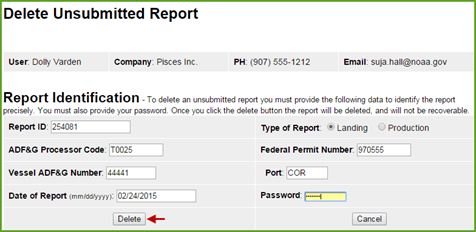


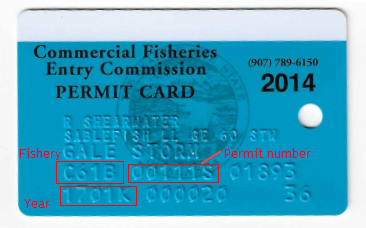
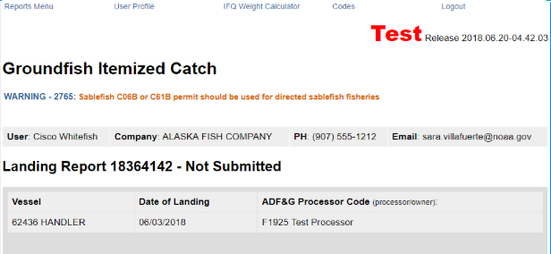
.png?version=1&modificationDate=1529513265871&cacheVersion=1&api=v2&width=552&height=298)



